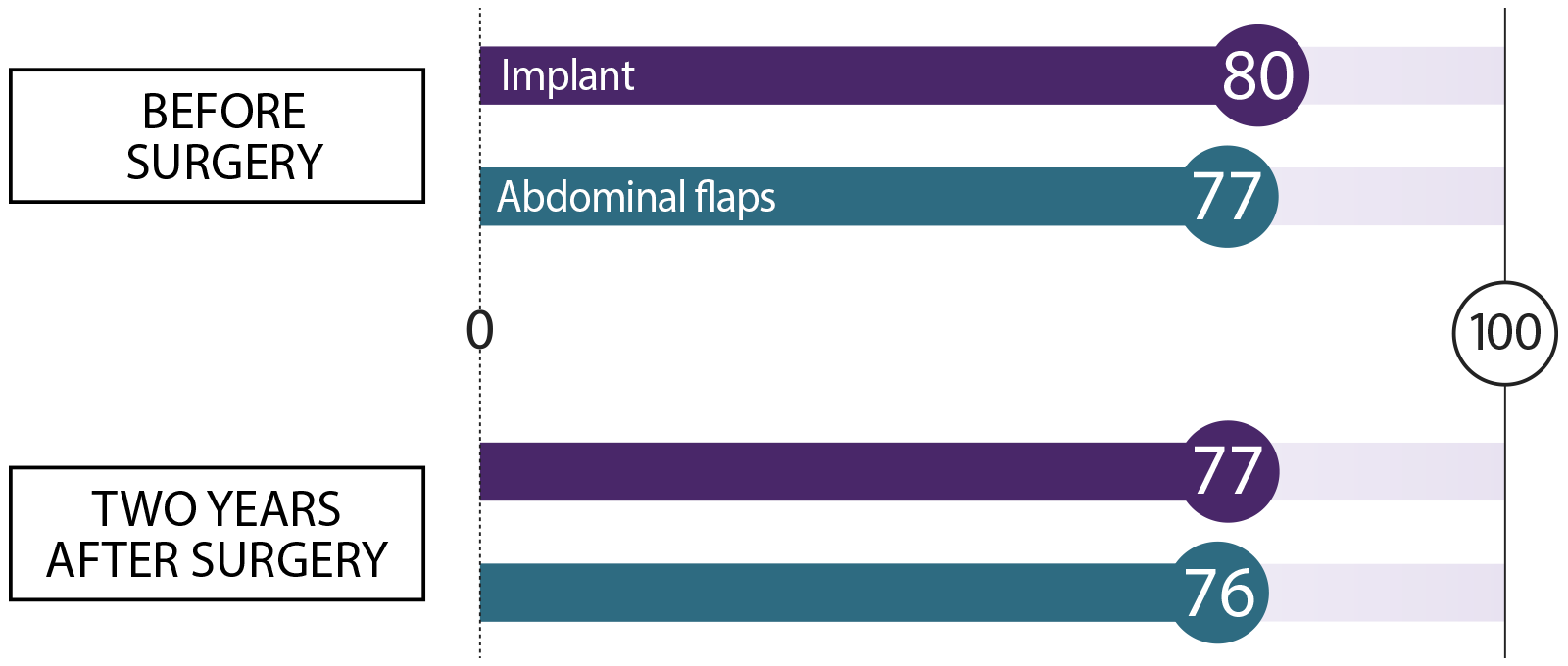Save to my favorites
What is it?
There are 2 types of flap reconstruction procedures that use natural tissue (skin, fat, and blood vessels) from other areas of your body near the inner thigh or buttocks.
These are not very common procedures and are mainly used for women that cannot use the tissue from their abdomen (stomach area) for their breast reconstruction.
How is it done?
The SGAP (Superior Gluteal Artery Perforator) flap procedure uses tissue from the buttock area to make a new breast.
The TUG (Transverse Upper Gracilis) flap procedure uses tissue from your inner thigh.
Learn more about the steps
Start
Natural Tissue Transfer
- The surgeon moves the tissue from your buttock area or inner thigh to the breast being reconstructed
- The arteries and veins of the flap are reconnected to the vessels at the breast site
- Skin and fat are used to shape a new breast
- The area where the tissue was removed is then surgically closed, and you will have a scar
- The surgery takes 6-8 hours for reconstruction on one breast
- This can be done at the same time as your mastectomy or later
3 Months
Nipple Reconstruction or other optional procedures
By the numbers
- Number of surgeries: 1
- Number of nights in hospital: 3 to 5
- Length of recovery: 6 weeks with restrictions on physical activities, but many patients need additional time before returning to work
These 2 types of reconstruction are not very common. Please talk to your doctor if you would like more information about these procedures.
How do other women feel about it?
We asked women who had breast reconstruction how they felt before surgery and two years after their procedure. We asked about these topics. Here’s what they said:
Satisfaction with breasts How happy are you with the look and feel of your breasts?
 Sexual well-being
Sexual well-being How do you feel about your body as it relates to your sexuality?
 Psychosocial well-being
Psychosocial well-being How do you feel about your body image, and how confident are you in social settings?
 Physical well-being: Chest
Physical well-being: Chest How does your chest feel, physically?
 Physical well-being: Abdomen
Physical well-being: Abdomen How does your abdomen (stomach area) feel, physically?

 Sexual well-being How do you feel about your body as it relates to your sexuality?
Sexual well-being How do you feel about your body as it relates to your sexuality?
 Psychosocial well-being How do you feel about your body image, and how confident are you in social settings?
Psychosocial well-being How do you feel about your body image, and how confident are you in social settings?
 Physical well-being: Chest How does your chest feel, physically?
Physical well-being: Chest How does your chest feel, physically?
 Physical well-being: Abdomen How does your abdomen (stomach area) feel, physically?
Physical well-being: Abdomen How does your abdomen (stomach area) feel, physically?

